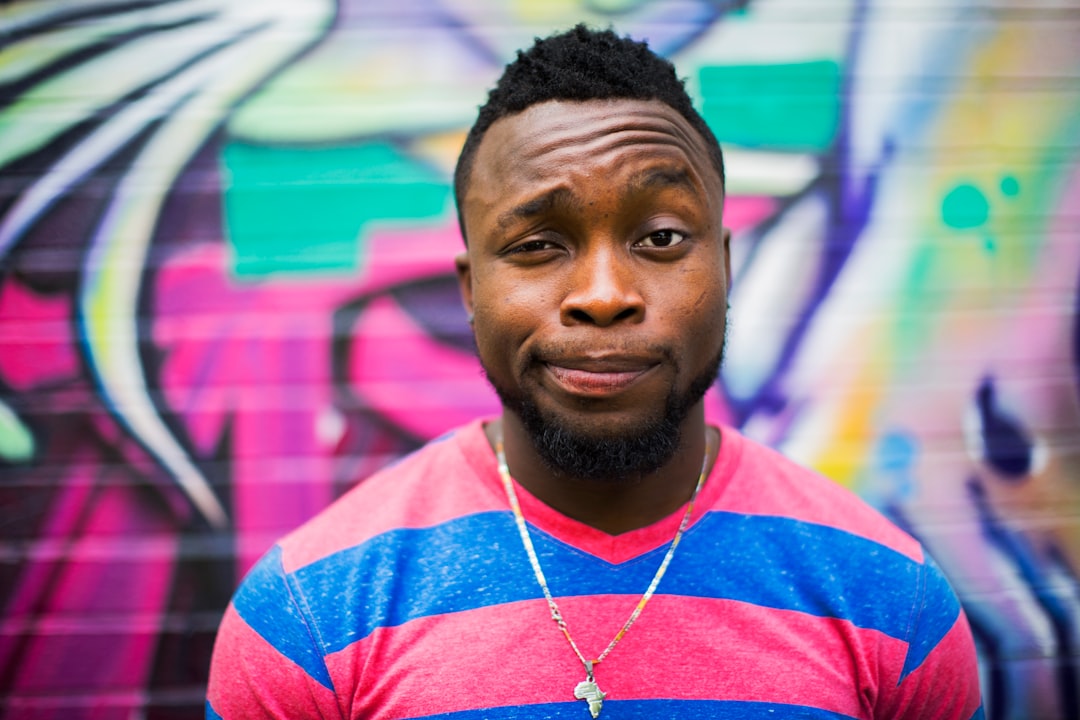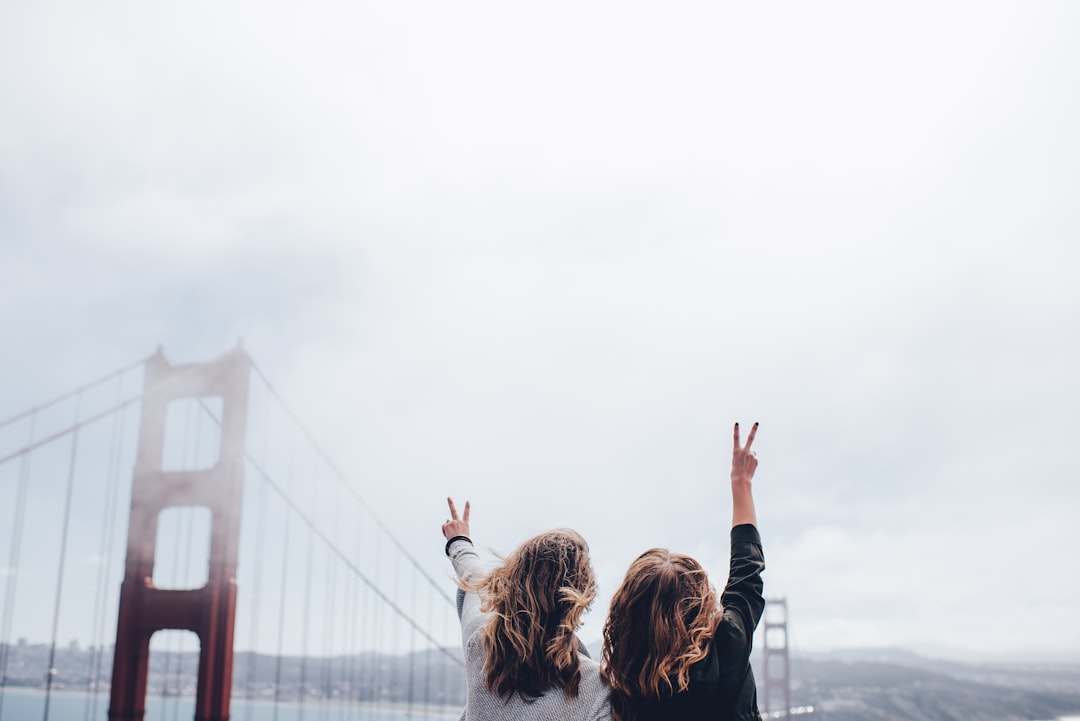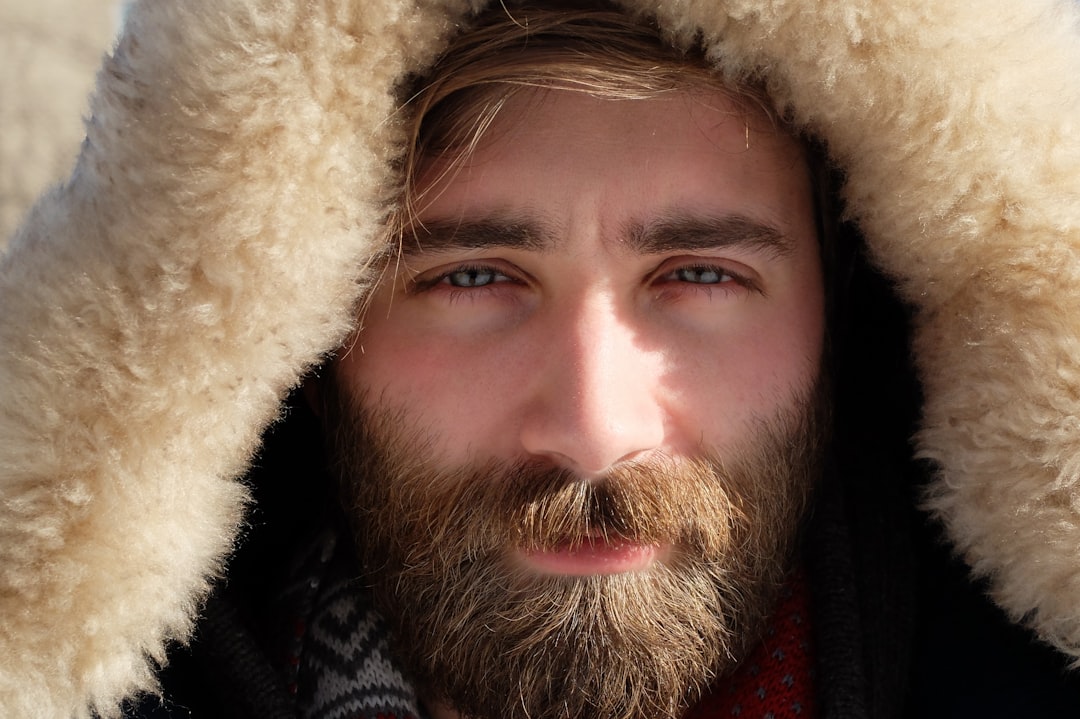7 Ways AI Face Animators Are Transforming Travel Selfies in 2024
7 Ways AI Face Animators Are Transforming Travel Selfies in 2024 - AI-Powered Dynamic Expressions Bring Travel Photos to Life
AI is injecting new life into travel photos, allowing travelers to transcend the limitations of static images. These tools breathe animation into previously inert pictures, bringing a new level of emotional expression and narrative context to travel photography. It's no longer just a snapshot of a moment; it's a mini-movie capturing the essence of the experience. Anyone can leverage these advancements, from travel influencers sharing their adventures to everyday users wanting to spice up their social media feeds. Platforms offer user-friendly interfaces, making it remarkably easy to animate a selfie and transform it into a captivating video. Whether it's adding a smile to a mountaintop panorama or a playful blink to a beachside capture, these tools let individuals craft highly personalized animated travel stories. This shift towards dynamic visuals in travel photography reflects a broader cultural trend where visual content reigns supreme, pushing AI face animators into a prominent role in how we experience and share travel memories in 2024.
It's fascinating how AI is starting to breathe life into our travel photos. Tools like Unboring Animate and others are now letting anyone easily transform static selfies into short animated videos. You simply upload a clear portrait, and the AI does the rest, generating expressions and movements. While it's still early days, the technology is getting quite good at mimicking real human expressions, and this creates a richer narrative for travel photos.
What I find particularly interesting is the growing range of options these tools offer. You can control the output format, experiment with different poses, and even randomize the animation results. This personalization element allows travelers to craft unique, expressive videos that showcase their adventures in a more engaging way.
It's also interesting to observe the intersection of AI and the broader influencer scene. There's a growing adoption of these tools amongst travel influencers, suggesting that they're seeing a real benefit in using AI-powered expressions to increase engagement on their channels. It begs the question – are these dynamic expressions becoming a new standard for how we share our travel experiences online? Perhaps the algorithms behind these tools are beginning to tell us what types of travel photos resonate the most – happy, joyful, and engaging. However, this does raise questions about authenticity, especially as the technology evolves and becomes even more powerful. It'll be compelling to see how this dynamic interplay between technology, storytelling, and the travel experience unfolds over the coming years.
7 Ways AI Face Animators Are Transforming Travel Selfies in 2024 - MyEdit Offers Diverse Styles from Futuristic to Watercolor for Travel Influencers
MyEdit is making waves in the travel influencer community by offering a wide spectrum of AI-powered styles for their photos, ranging from futuristic to watercolor effects. This platform gives influencers a new way to transform ordinary travel selfies into more engaging and visually rich content. They can enhance their images with tools that remove distractions, generate creative avatars, and even create unique artistic scenes. This reflects a broader trend among travel influencers: pushing the boundaries of how they express themselves and tell their travel stories through imagery. MyEdit’s capabilities highlight how AI is shifting the landscape for travel influencers, who are constantly looking for ways to stand out and connect authentically with their audiences. In a world where visuals drive engagement, MyEdit could play a key role in changing how travel experiences are shared online, though concerns about originality might arise as this technology matures.
MyEdit, which is gaining attention as a prominent AI selfie generator, offers a fascinating array of stylistic options for travel influencers. It's intriguing how they've incorporated a diverse palette, ranging from futuristic, almost cyberpunk-like aesthetics to softer, watercolor-inspired effects. While some may find it refreshing, others might question if it's leading to a homogenization of styles or potentially diminishing the unique visual language of travel photography.
It's worth considering the impact of such tools on the influencer landscape. Are these diverse style options helping influencers to stand out, or is it leading to a situation where the tools themselves are defining the visual trends? It's an interesting area of research, particularly as the tools become more sophisticated and provide a larger variety of readily available styles for influencers to implement.
Essentially, MyEdit (and other AI-powered platforms) are allowing for rapid experimentation with various artistic interpretations within the context of travel imagery. It begs the question: Are we moving towards a future where AI-generated visual styles dominate the travel photography landscape? While it's exciting to see this degree of creative freedom, it's important to consider how the evolution of such tools might ultimately impact the visual creativity and individuality of travel photography in the future.
7 Ways AI Face Animators Are Transforming Travel Selfies in 2024 - VanceAI Enhances Selfie Details for Picture-Perfect Travel Memories
VanceAI is changing the game for travel photography by offering tools that elevate selfie quality, helping travelers capture truly stunning memories of their adventures. Their AI-powered technology provides features to enhance images, including upscaling, skin smoothing, and noise reduction, effectively improving the overall appearance of travel selfies. This not only produces technically better photos but also gives travelers, especially those active on social media and in the travel influencer space, a way to present their experiences in a more engaging way. Since social media heavily relies on visuals, VanceAI's tools offer a compelling avenue for users to make their content stand out, achieving a higher level of polish and aesthetic appeal. However, this ease of enhancement leads to a broader discussion about authenticity in the context of travel photography, especially when AI-powered tools can easily create almost flawless results. In a world where near-perfect visuals are readily available, one has to wonder if this emphasis on perfection may ultimately change the way we view the genuineness of shared travel memories.
VanceAI, which emerged in 2020, offers a fascinating glimpse into the potential of AI-driven image enhancement, particularly in the realm of travel photography. They've built a suite of over a dozen tools leveraging advanced machine learning algorithms to refine and improve images. Their focus seems to be on making these powerful tools accessible to a broad audience, enabling anyone to enhance images with just a few clicks.
While VanceAI offers a wide range of tools, including background removal and image compression, their Portrait Retoucher is of particular interest when considering travel selfies. It's designed to improve skin texture, which can be invaluable when trying to get a picture-perfect shot in challenging travel conditions. It's impressive how they've achieved the level of smoothing and retouching offered with their AI approach.
It's interesting to note how VanceAI's AI-powered tools are gaining traction within various industries. It suggests that these tools aren't just for hobbyists; their capabilities are compelling enough to be adopted by a diverse range of users. One could speculate that the ease of use and the results they can achieve in terms of enhancing selfies is part of the reason behind this growth in adoption.
The future of travel selfies is clearly intertwined with AI's continuing evolution. The use of VanceAI's tools (and others like them) signifies a growing trend towards crafting more engaging and expressive travel photos. It remains to be seen if this reliance on AI will lead to a more homogeneous visual aesthetic in the long run, but it's certainly intriguing to consider how these technologies are already reshaping how we capture and share travel moments. Perhaps these changes are not simply about improving images but also about shaping how we tell our travel stories to the world.
7 Ways AI Face Animators Are Transforming Travel Selfies in 2024 - CapCut's Mobile App Adds Motion to On-the-Go Travel Snapshots
CapCut's mobile app is introducing a new dimension to travel photography by enabling users to add movement to their spontaneous travel shots. Anyone can now transform standard travel selfies into lively, dynamic mini-videos. The app's user-friendly design makes it easy to utilize features like AI-powered background removal, zoom controls, and variable playback speeds, all of which empower travelers to create more captivating visuals of their adventures. Furthermore, CapCut lets users add motion effects and informative captions, turning their travel experiences into short, engaging videos. This is particularly enticing to travel influencers and others who want to make their stories stand out online. However, this new trend of enhanced travel storytelling comes with a concern about whether it leads to fabricated, rather than authentic, representations of a travel experience. As CapCut and similar apps evolve, they're likely to continue changing how we perceive and broadcast our travel memories in our increasingly digital world.
Observing the rise of tools like CapCut's mobile app for adding motion to travel photos is fascinating from a researcher's perspective. It seems clear that moving images evoke stronger emotional responses than static ones, potentially making travel content more engaging for viewers. In today's world, where our attention spans are shrinking, the ability to quickly communicate travel experiences through short animated clips might be crucial for capturing and retaining interest, especially on platforms like Instagram.
This trend of adding motion to travel snapshots dovetails nicely with the current surge in user-generated content. It appears people increasingly value authentic content from friends, family, and influencers over branded content. By using apps like CapCut, everyday travelers and influencers alike can produce more appealing and, arguably, more relatable travel stories.
The technical underpinnings of these tools are also intriguing. The AI algorithms behind them utilize sophisticated machine learning techniques to convincingly mimic human movement and facial expressions. They can track subtle shifts in facial features, making it possible to generate lifelike animations of smiles, blinks, and other expressions that can bring a travel selfie to life. This technology has a noticeable impact on influencer strategies, with evidence suggesting that those who incorporate animated features are seeing higher engagement rates.
This rise of animated travel photos mirrors a wider cultural shift towards visual storytelling. These dynamic selfies essentially act as a modern-day "digital postcard," conveying emotions and experiences in a way static photos can't. This, in turn, may affect how social media algorithms prioritize content, potentially giving more prominence to videos over images. While this is certainly beneficial for content creators who are actively using these tools, it also raises concerns about authenticity. The ability to easily enhance or modify expressions raises questions about whether we can trust these travel depictions as a genuine reflection of the experience.
However, these tools also open up incredible possibilities for creative expression. Individuals can now personalize their animated travel stories to a remarkable degree, reflecting their unique personalities and creative choices. This personalization can lead to the development of distinctive digital "brands" that are as diverse as the travel experiences themselves. This customization trend is fascinating as it touches upon our understanding of identity in the digital space.
Beyond influencing how we share travel experiences, it's worth exploring the impact animation may have on memory recall. Studies have shown that motion can make memories more vivid and easily recalled. If that holds true, then enhancing travel photos with motion might not just be about making them more visually appealing – it might strengthen the lasting impression of the experiences they represent. This creates a stronger connection between the digital representation of a trip and the actual memory, potentially making sharing travel experiences even richer and more impactful.
Ultimately, the intersection of travel, AI-driven animation, and social media is an evolving space. Understanding these complex relationships and their impact on how we capture, share, and perceive travel experiences will be vital as this technology continues to develop.
7 Ways AI Face Animators Are Transforming Travel Selfies in 2024 - Clipfly Converts Still Images into Shareable Video Clips for Social Media
Clipfly is a new player in the world of travel photography, particularly for social media. It leverages AI to transform ordinary photos, especially selfies, into short, shareable video clips. This makes it easy for anyone, regardless of their video editing skills, to turn a static travel moment into something more dynamic and engaging. Users can upload a photo and Clipfly's AI takes over, animating it with a few clicks. The tool also offers options to add voiceovers and edit videos, allowing travelers to add more context and personality to their animated pictures. It’s an interesting development, especially for travel influencers or anyone who wants to add a little extra "wow" factor to their online travel photos.
While this kind of technology certainly adds a new layer to how we tell our travel stories online, it does raise some questions. As AI gets better at generating realistic movements and expressions in photos, it becomes harder to discern the line between genuine experiences and enhanced, or perhaps even fabricated, ones. Essentially, the authenticity of travel experiences portrayed on social media with these kinds of tools remains a concern. Clipfly, along with other AI tools like it, is changing the landscape of how we share our travel memories. It's a powerful technology, but it's crucial to remain aware of its impact on how we interpret what we see online.
Clipfly, developed by Fotor, is an interesting AI-powered platform that's shifting how we think about sharing travel experiences. It essentially lets you convert a still image, like a selfie from your trip, into a short, shareable video clip. What makes it intriguing is that it doesn't require any prior video editing knowledge. You simply upload a photo and let the AI do the rest – generating animations, adding voiceovers using text-to-speech, and even letting you change the background of the clip.
Beyond basic animation, Clipfly also provides controls over the output, allowing you to tweak things like frame rate and resolution. This level of control is useful for optimizing videos for different platforms, especially if you're aiming for high-quality 4K output. Tools like Clipfly, along with Deep Nostalgia, CutoutPro, and HitPaw, are increasingly popular amongst travel enthusiasts, particularly influencers, because they offer a way to create more compelling content. They're aiming to leverage how video tends to grab attention more than still images – in some studies it has been shown to improve engagement by a large factor.
It's also interesting to see how these AI-powered platforms might impact social media. They are pushing content creation towards a more video-centric approach, where simple animations can easily turn static photos into something more vibrant. While it has a potential benefit to reach more people via social media algorithms, this new trend also prompts us to think about authenticity. How do we navigate between visually engaging stories and authentic travel experiences? Do the AI-generated animations change the way we perceive a travel memory?
The way I see it, Clipfly (and other tools like it) are becoming tools to help shape how we narrate our travel adventures. As AI evolves, the possibility of using this to create more creative and visually interesting travel stories is very promising, and it is certainly creating a new type of visual storytelling on platforms like Instagram and TikTok. However, we must carefully consider what the implications are for both creators and viewers, especially as the lines between reality and AI-generated representations become increasingly blurred. It'll be fascinating to see how these technologies transform how we connect with each other through our travel stories over the coming years.
More Posts from itraveledthere.io:
- →7 Innovative Online Tools for Drawing on Travel Photos in 2024
- →7 Free Online Photo Editors That Actually Preserve Image Quality in 2024
- →How to Enhance and Upscale 2D VTuber Avatar Art for High-Resolution Streaming
- →7 Ethical Considerations for Travel Photographers Using AI Watermark Removal Tools
- →7 Proven Techniques to Remove Background Colors from Product Photography Without Damaging Edge Details
- →The Evolution of AI-Powered Color Alteration in Portrait Photography A 2024 Update


